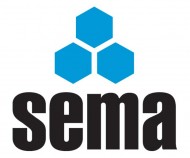This month our first question looks at integrating on-site racking systems and how these should be certified and tested. Our next question is looking for clarification on what should be included in a rack inspection report.
 Integration of Racking systems
Integration of Racking systems
Q. I am currently tasked with the setting up of various manufacturing cells and the integration of existing on site racking systems (clip together racks with chip wood shelves’) and the design and manufacture of bespoke racks for the storage of machine tools and jigs and fixtures.
I would appreciate some clarification on the legal requirements to provide certification and testing requirements for this type of storage equipment.
A. The normal Health and safety legislation applies to racking and shelving and, in particular, PUWER. Amongst other things PUWER requires that the equipment is inspected and that information is available to enable its safe use.
The HSE publication “Warehousing and storage – A guide to health and safety” HSG76; gives useful guidance and includes a chapter on “Storage”.
One important factor in the safe use of storage equipment is the loading limitations. For most types of racking and shelving load limitations, and other information, is provided on a load notice. The SEMA publication “Load Notices” gives examples of typical load notices – similar information is also available in BS EN15635.
The load data presented on a load notice is derived by a number of means ranging from structural design (carried out in accordance with an appropriate design code) through to full scale load tests. The development of this safe load data is a specialist task and is normally carried out by the equipment manufacturer, expert test houses or specialist Consultants. It is unusual to carry out full-scale load testing due to the difficulty, expense and risk involved in conducting the test although, in principle, this can be done. Full scale testing should only be entrusted to a specialist and experienced test house.
Be aware that the rated loading for most pallet racking is based on a uniformly distributed load over the whole storage area. Machine tools are notorious for being anything other than uniformly distributed loads, are often large single pieces of metal that can cause severe damage to lightweight racking when handled incorrectly and some expert advice might well be worthwhile in this area. Your racking supplier should be able to provide some guidance in this area.
SEMA has a number of widely recognised design codes for a variety of static storage media – the following link gives information http://www.sema.org.uk/guides.asp
The safety of storage equipment can be compromised by damage and abuse, and for that reason SEMA has introduced a SEMA Approved rack Inspector (SARI) qualification. Information on qualified SARI’s is available at the following link http://www.sema.org.uk/SARI’s
What should be included in a Rack Inspection?
Q. I am familiarising myself with racking and shelving regulations. I have read the HSE Warehouse and Storage booklet and would welcome your assistance in clarifying the following. The HSE document refers to a “person responsible for racking safety”, who would carry out these inspections and keep records.
What would you expect to be recorded on a racking inspection document? and are there any examples anywhere that I could look at?
A. The publications that will do most to help you are the SEMA Guide to the Conduct of Pallet Racking and Shelving Surveys together with the SEMA Code of Practice for the Use of Static Pallet Racking. However while these have some of the information you require it is spread about a bit.
We would suggest the best way of familiarising yourself with the requirements would be to attend one of the SEMA one day courses on ‘Rack Safety Awareness’ which pulls all this together from the point of view of someone who has to carry out regular internal racking inspections. This covers what to look for, how to classify it into red amber or green categories and how to record it. As an individual you can attend one of these courses which are held at the SEMA HQ or alternatively SEMA can bring the course to you at your premises. The latter may be preferable if you have 6 or more people who would benefit from this training and it can then be held on a day that suits your organisation together with a practical session in looking at your own stores and ensuring that the items talked about are being correctly interpreted by those attending.
SEMA is delighted to be working with WLN on the storage Question and Answer Column. On the WLN website is a list of previously published columns.
SEMA Rack Safety Awareness and Inspection Courses SEMA runs a one-day safety course on Rack Safety Awareness and Inspection.
SEMA Approved Rack Inspectors Qualification This qualification is aimed at professionals who conduct rack surveys as an integral and significant part of their duties.
SEMA Publications SEMA has 26 publications in stock – Codes of Practice, ‘Guides’ and European documents – all of which are available from our Offices.
SEMA USERS Club SEMA runs a USERS Club designed to be of benefit to purchasers and users of storage equipment.




Comments are closed.